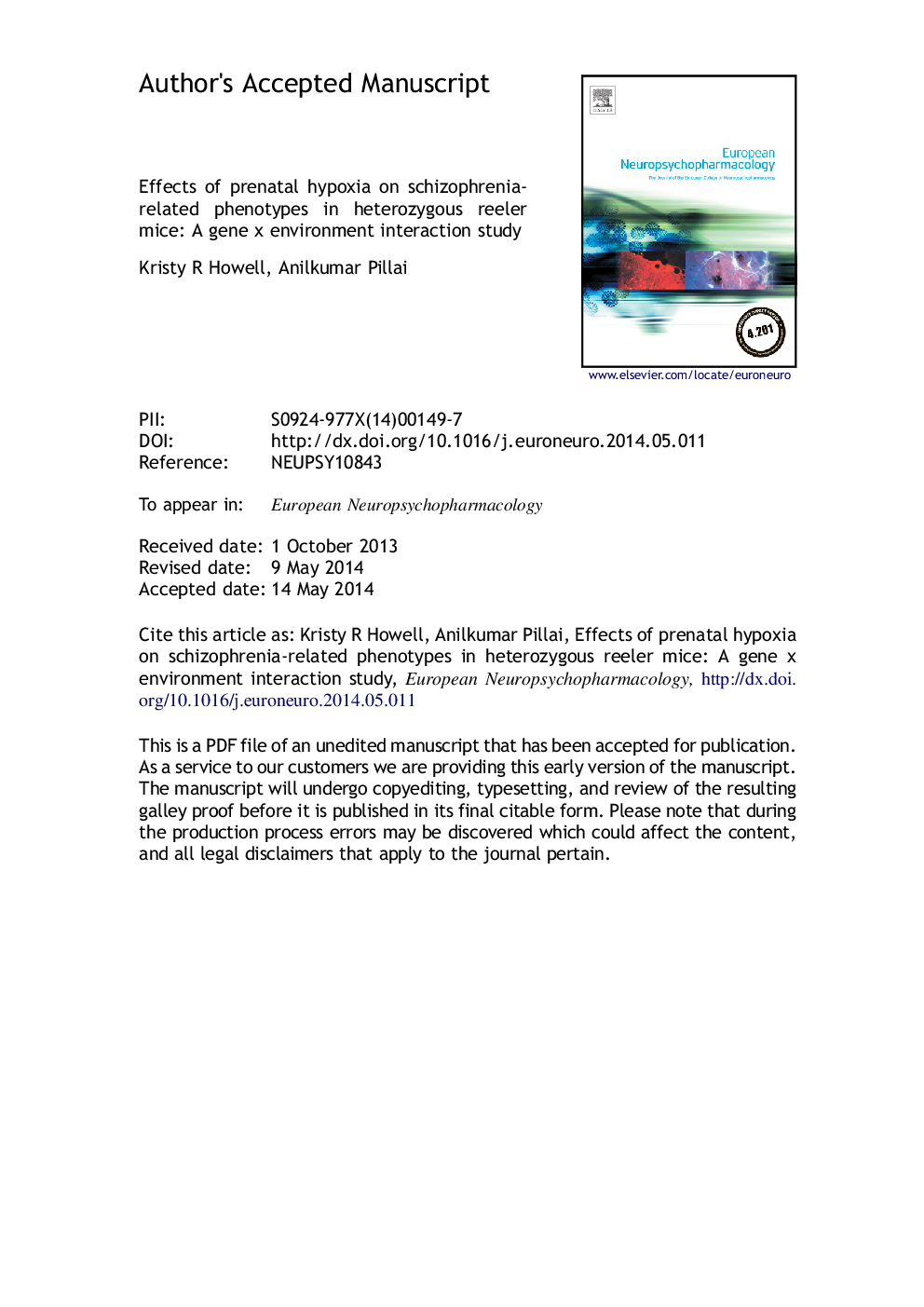| Article ID | Journal | Published Year | Pages | File Type |
|---|---|---|---|---|
| 10299208 | European Neuropsychopharmacology | 2014 | 43 Pages |
Abstract
Both genetic and environmental factors play important roles in the pathophysiology of schizophrenia. Although prenatal hypoxia is a potential environmental factor implicated in schizophrenia, very little is known about the consequences of combining models of genetic risk factor with prenatal hypoxia. Heterozygous reeler (haploinsufficient for reelin; HRM) and wild-type (WT) mice were exposed to prenatal hypoxia (9% oxygen for two hour) or normoxia at embryonic day 17 (E17). Behavioral (Prepulse inhibition, Y-maze and Open field) and functional (regional volume in frontal cortex and hippocampus as well as hippocampal blood flow) tests were performed at 3 months of age. The levels of hypoxia and stress-related molecules such as hypoxia-inducible factor-1 α (HIF-1α), vascular endothelial factor (VEGF), VEGF receptor-2 (VEGFR2/Flk1) and glucocorticoid receptor (GR) were examined in frontal cortex and hippocampus at E18, 1 month and 3 months of age. In addition, serum VEGF and corticosterone levels were also examined. Prenatal hypoxia induced anxiety-like behavior in both HRM and WT mice. A significant reduction in hippocampal blood flow, but no change in brain regional volume was observed following prenatal hypoxia. Significant age and region-dependent changes in HIF-1α, VEGF, Flk1 and GR were found following prenatal hypoxia. Serum VEGF and corticosterone levels were found decreased following prenatal hypoxia. None of the above prenatal hypoxia-induced changes were either diminished or exacerbated due to reelin deficiency. These results argue against any gene-environment interaction between hypoxia and reelin deficiency.
Related Topics
Life Sciences
Neuroscience
Biological Psychiatry
Authors
Kristy R. Howell, Anilkumar Pillai,
